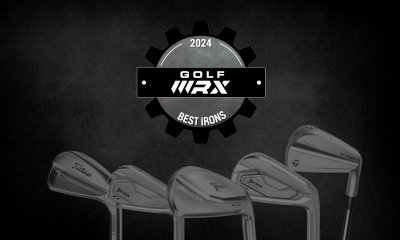Equipment
Best fairway woods of 2024: Expert club fitters recommend the most versatile and forgiving options

Whether it be hitting approach shots into longer par 4’s and par 3’s, going after par 5’s in two, or just trying to hit more fairways off the tee — finding the best fairway wood of 2024 to fit your needs is a must as you fill your golf toolbox.
 Looking at the best fairway wood playing field for 2024, we continue to see more fairway wood options from every manufacturer. What used to be a single model release has been expanded to three — and in some cases even four — driver D.N.A.-infused models to fit specific player types.
Looking at the best fairway wood playing field for 2024, we continue to see more fairway wood options from every manufacturer. What used to be a single model release has been expanded to three — and in some cases even four — driver D.N.A.-infused models to fit specific player types.
These new fairway woods impress us with their ability to utilize new technology and construction methods to go faster, and further, while also offering never-before-seen levels of forgiveness. It’s now easier than ever to find the right one that matches your swing.
That being said, ultimately the best way to find the best fairway woods for you is to work with a professional fitter using a launch monitor. The difficult part is a lot of people don’t have easy access to fitters, launch monitors, and club builders — so at GolfWRX — with the help of our panel of expert fitters — we have done a lot of the work for you to narrow down your short list of fairway woods to demo.
Best fairway woods 2024: The categories
We have broken our 2024 best fairway wood list into two categories.
- Best fairway wood for golfers seeking forgiveness
- Best fairway wood for golfers seeking versatility
We selected this format for fairway woods in cooperation with fitters because every golfer prioritizes one of these two elements, regardless of age, handicap, or sex. And for many golfers, forgiveness is the number one factor when selecting a fairway wood.
Most versatile fairway woods of 2024

Ping G430 Max
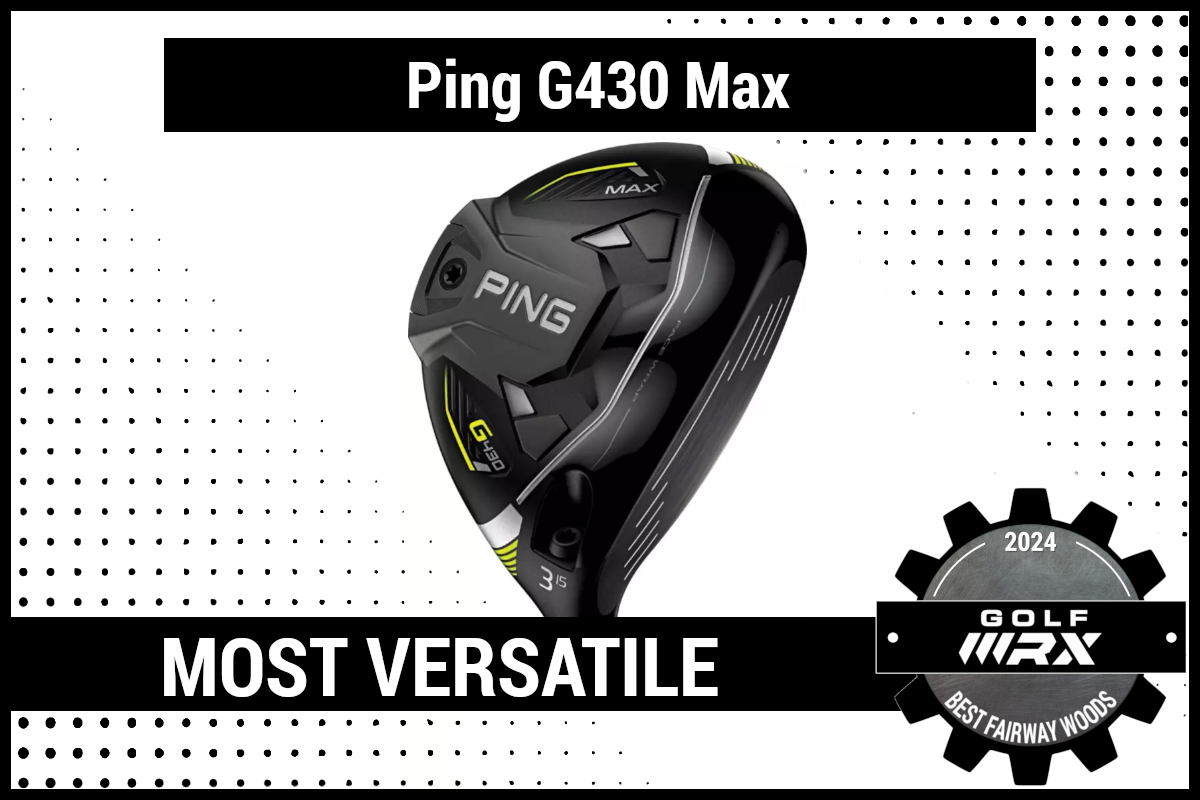
Ping developed Carbonfly Wrap in a bid to deliver more distance by positioning the CG closer to the face to maximize ball speed, resulting in higher, longer carries. The lightweight composite crown wraps into the heel and toe sections of the skirt, creating weight savings of 10 grams, which are reallocated to achieve the lower CG and increase ball speed. The composite also plays a role in the pleasing sound, while a tungsten backweight extends the perimeter weighting to ensure forgiveness.
For the full technology breakdown, check out our launch piece.
Callaway Paradym Ai Smoke Max

Ai Smart Face — the centerpiece of Callaway’s Paradym Ai Smoke drivers — is also the key technology of new Callaway Paradym Ai Smoke fairway woods and hybrids. As with the drivers, the carbon chassis is lighter, allowing for 24 grams of weight to be redistributed throughout the head for enhanced launch, spin, and forgiveness. As utilized in Paradym, engineers leverage a tungsten speed cartridge to push CG low and forward.
For the full technology breakdown, check out our launch piece.
Titleist TSR2
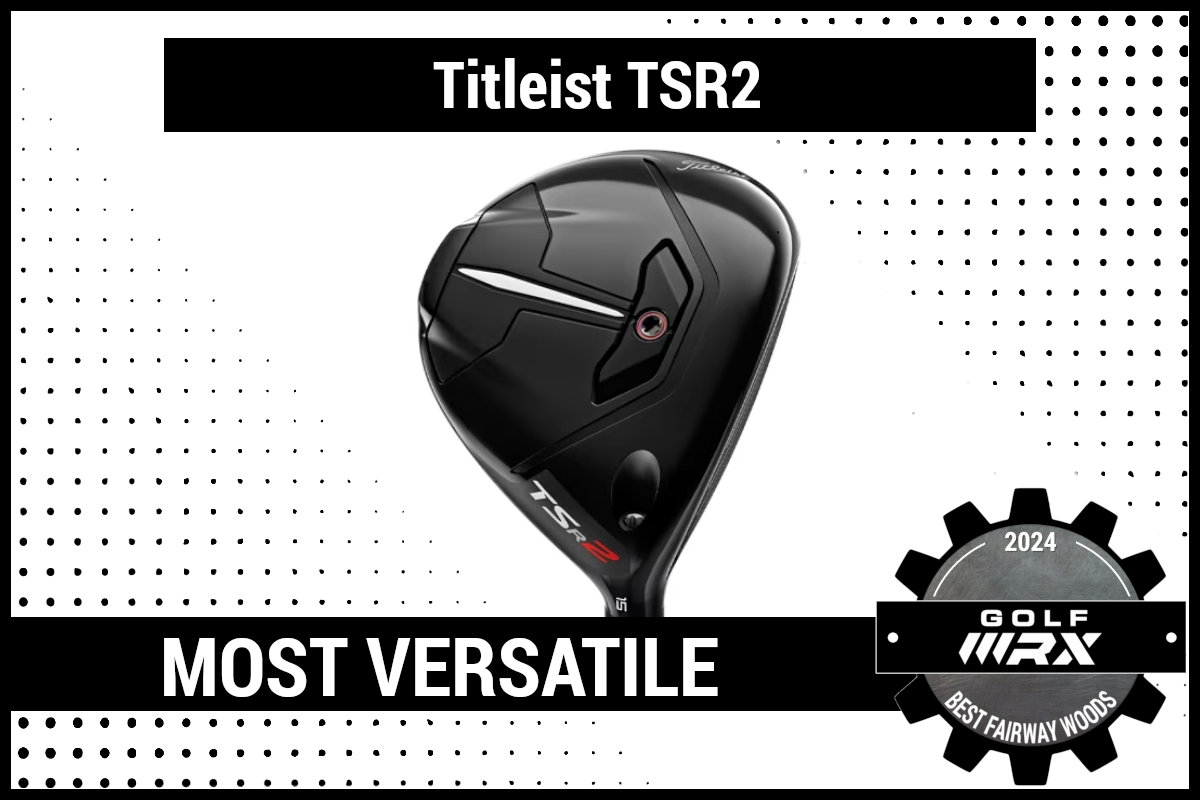
TSR2 fairways feature the lowest CG in Titleist history for an all-steel construction designed to create speed and launch without excessive spin. New Open Hosel Construction created space for sizable improvements to key areas of performance by removing unwanted weight high and towards the heel.
For the full technology breakdown, check out our launch piece.
TaylorMade Qi10 Tour

The Qi10 Tour model uses a multi-material titanium-carbon construction and offers a more compact head shape, equipped with a moveable 50-gram weight in the sole for precise weight placement. By placing the sliding weight further back in the head, golfers can achieve a higher launch and more stability, whereas placing the weight further forward helps achieve a lower-spin and more penetrating ball flight.
For the full technology breakdown, check out our launch piece.
Titleist TSR3
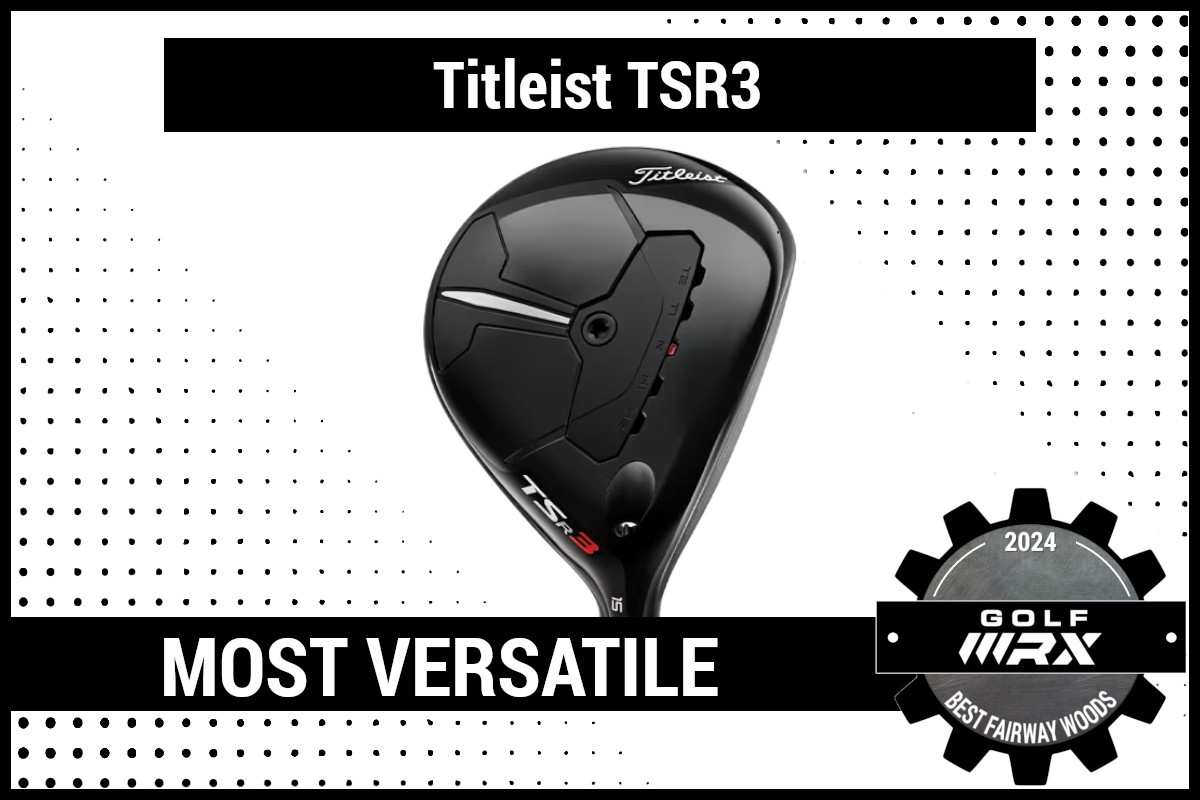
Titleist’s adjustability-focused fairway wood is designed with a new, easy-to-adjust 5-position SureFit Adjustable CG Track System to fine-tune performance. It features the same Open Hosel Construction as TSR2 fairways. The TSR3’s CG has been positioned deeper, slightly lower, and closer to face center to provide easy, high launch with plenty of forgiveness.
For the full technology breakdown, check out our launch piece.
Most forgiving fairway woods of 2024

TaylorMade Qi10 Max

The Qi10 Max fairway wood heads use the company’s “Infinity Carbon Crown” that helped free up weight to be placed lower in the heads, helping achieve higher inertia and an enlarged face profile to boost ball speeds across their faces. Compared to the standard Qi10 model, the Qi10 Max has a larger front-to-back shape and shallower profile that’s designed for increased forgiveness and playability.
For the full technology breakdown, check out our launch piece.
Ping G430 Max

Ping developed Carbonfly Wrap in a bid to deliver more distance by positioning the CG closer to the face to maximize ball speed, resulting in higher, longer carries. The lightweight composite crown wraps into the heel and toe sections of the skirt, creating weight savings of 10 grams, which are reallocated to achieve the lower CG and increase ball speed. The composite also plays a role in the pleasing sound, while a tungsten backweight extends the perimeter weighting to ensure forgiveness.
For the full technology breakdown, check out our launch piece.
Callaway Paradym Ai Smoke Max

Ai Smart Face — the centerpiece of Callaway’s Paradym Ai Smoke drivers — is also the key technology of new Callaway Paradym Ai Smoke fairway woods and hybrids. As with the drivers, the carbon chassis is lighter, allowing for 24 grams of weight to be redistributed throughout the head for enhanced launch, spin, and forgiveness. As utilized in Paradym, engineers leverage a tungsten speed cartridge to push CG low and forward.
For the full technology breakdown, check out our launch piece.
Cobra Darkspeed Max
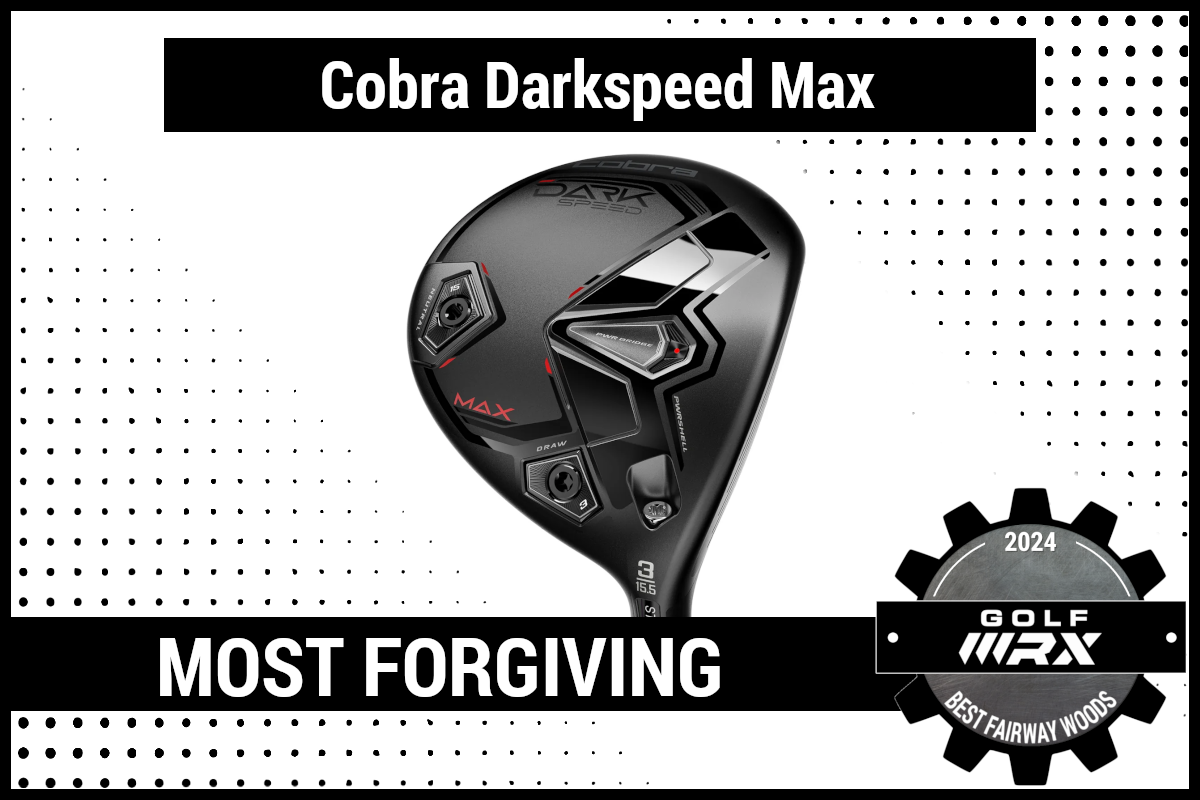
Cobra’s draw-biased model is built for the player who needs forgiveness. Depending on the weight configuration, either greater forgiveness or more draw bias can be targeted. The draw-biased Max model is the most forgiving in the lineup. Here the weights are 12 and three grams and are situated in the rear and heel of the club to achieve the desired launch and ball flight.
For the full technology breakdown, check out our launch piece.
Titleist TSR2

TSR2 fairways feature the lowest CG in Titleist history for an all-steel construction designed to create speed and launch without excessive spin. New Open Hosel Construction created space for sizable improvements to key areas of performance by removing unwanted weight high and towards the heel.
For the full technology breakdown, check out our launch piece.
Again, we can’t thank the fitters enough for their time, and we hope that in your search for your best fairway wood for 2024, we can help you find it!
Best fairway woods of 2024: Meet the fitters
- Adam Rathe: Club Champion
- Adam Scotto: Club Champion
- Adam Seitz: Club Champion
- Aidan Mena: Club Champion
- Alex Dice: Carl’s Golfland
- Alex Praeger: Club Champion
- Ben Giunta: The Tour Van
- Blake Smith, PGA: True Spec
- Bo Gorman: True Spec
- Brad Coffield: Carl’s Golfland
- Brett Ott: Club Champion
- Brian Riley: Club Champion
- Cameron Scudder: Club Champion
- Carmen Corvino: True Spec
- Christian Sandler: Club Champion
- Clare Cornelius: Cool Clubs
- Dan Palmisano: Club Champion
- Dane Byers: Club Champion
- Darren Joubert: Club Champion
- Dennis Huggins: Club Champion
- Drew Koch: Club Champion
- Eric Touchet: Touchet Performance Golf
- Erik Gonzales: Club Champion
- Evan Morrison: Club Champion
- Gus Alzate: True Spec
- Jake Medlen: Stripe Show Club Fitters
- Jake Woolston: Club Champion
- Jake Wynd: Club Champion
- Jay Marino: Club Champion
- Jeremy Olsen: Club Champion
- Jim Yenser: Club Champion
- Joe Stefan: Club Champion
- Joey Simon, PGA: Club Champion
- Jonathan Kaye: Club Champion
- Jordan Patrick: True Spec
- Jordan Rollins: Club Champion
- Kevin Arabejo: Club Champion
- Kevin Downey: Club Champion
- Kirk Oguri: Pete’s Golf
- Kyle Lane: Club Champion
- Kyle Murao: Club Champion
- Marc Roybal: True Spec
- Mark Hymerling: Club Champion
- Mark Knapp: Carl’s Golfland
- Matt Miller: Club Champion
- Matt Rish: Club Champion
- Matthew Gandolfi: Club Champion
- Mike Martysiewicz: Club Champion
- Mike Weis: Club Champion
- Mitch Schneider: Club Champion
- Nicholas Barone: Club Champion
- Nick Sherburne: Club Champion
- Nick Waterworth: Haggin Oaks
- Preston Vanderfinch: Club Champion
- Rick Lane: Club Champion
- Rob Anderson, PGA: Club Champion
- Russell Hubby: Club Champion
- Ryan Fisher: Grips Golf
- Ryan Grimes: Club Champion
- Ryan Johnson: Carl’s Golfland Bloomfield Hills
- Sam Kim: True Spec
- Scott Sikorski: Club Champion
- Scott Felix: Felix Club Works
- Scott Trent: Club Champion
- Sean Pfeil: Club Champion
- Shaun Fagan: True Spec
- Steve Harrow: Club Champion
- Tad Artrip: Club Champion
- Thomas Mattaini: Pull the Pin
- Tony Rhode: True Clubs
- William Buse: Club Champion
- William Cho: NovoGolf
- William Fields: Club Champion
Join the discussion about the best fairway woods of 2024 in the forums.
- RELATED: Best driver 2024: Most forgiving driver
- RELATED: Best driver 2024: Expert club fitters recommend the best driver for your swing speed
- LIKE21
- LEGIT7
- WOW2
- LOL1
- IDHT0
- FLOP1
- OB0
- SHANK19
Product Reviews
Titleist Vokey WedgeWorks L Grind review – Club Junkie Reviews

Titleist Vokey wedges might offer golfers the widest range of sole options to suit any swing type, condition, or shot type out there. Countless professionals use Vokey wedges each week and if you look in the bags at local courses you will see a lot of them in play there as well. While sole options are plentiful, Vokey just released another option, the L grind, for their 58 and 60-degree lob wedges. Listen to the full review, in-depth, on the Club Junkie podcast below or on any podcast platform.

Vokey’s L Grind is a low bounce, 4-degree grind that allows the leading edge to get close to the ground while still offering trailing edge, heel, and toe relief. This sole allows you to get the leading edge of the wedge down on the turf for shots of tight and firm lies. Relief on the wedge is going to allow the player to open the face without that leading edge coming up off the turf so you can hit higher lofted shots easily. This L Grind is only available in Vokey’s Raw finish, so the wedge will rust over time and use.


When you open the box on a Raw Vokey, it is always hard to tell if it is a Tour Chrome as the polish to the raw metal looks that good. Just holding the club in my hand, the L Grind looks a lot like an M Grind with the way they shaped the sole. I won’t lie, I was a bit nervous taking out a wedge with 4 degrees of bounce as I play in Metro Detroit and we rarely find tight and firm lies here. Around our greens is soft and lush with deep rough and bunkers with firmer sand. I tend to get a little steep with my wedges and have always used higher-bounce wedges. This year I was fit into SM10 50.12F, 56.14F, and 60.10S wedges. I thought this L grind was light years from my 60.10S, so I proceeded with caution and took it straight to the course. I had a 58.04L sent to me so I switched up my wedge setup to accommodate that.

Out on the course, I was shocked by the first shot with the 58.04L as it sped through the deep rough, popped the ball in the air, and plopped it into the green. I was short-sided and the ball released past the whole as I expected it to, resting about 8ft away for par. Shots out of the rough, whether partial or closer to full, were easy and drama-free. The L Grind glided through the deeper grass with little extra effort and faster than my S Grind. I rarely got to deep and slid under the ball, but when that did happen the ball came out with some spin and control, holding the green.


Off the fairway is where the L Grind really shined for me as I used it for more shots than I normally would have. I am usually a sand wedge player around the green unless I have to go to the lob for a short sided shot or to carry a bunker. Off the fairway you could just thump the sole of the wedge into the turf and it would quickly slide through, producing a shallower divot than I expected. The divot was honestly not much deeper or bigger than what I see with my 56.14F sand wedge. After the first shot I thought I just hit a good one and I would see additional digging soon, but that wasn’t the case. Partial shots from right off the green to about 40 yards offered great turf interaction. Opening the face was easy and the leading edge staying down gave a poor wedge player confidence to swing a little faster and hit a more solid shot.
Spin, as you would expect from a Vokey wedge, was high and predictable with shots checking up hard upon landing. I really liked playing the ball back in my stance a touch and pressing the wedge forward to hit a low, high spin, shot that checked up hard and then released towards the hole. Out of the trap the L Grind plays well as you can see a good amount of dynamic bounce when you open the face. The float wasn’t as good as my S Grind and if you hit the L Grind fat you could definitely come up short, but the L was very capable out of the firmer traps here.


Overall, the L Grind is a really solid option that is more versatile than its 4-degree bounce description. Players who play in softer conditions or have steeper swings don’t have to shy away from this wedge as I think it plays like a higher bounce sole. I don’t think there is a shot in the book that you can’t hit with this wedge, it is built to do it all.
- LIKE10
- LEGIT3
- WOW1
- LOL0
- IDHT0
- FLOP0
- OB0
- SHANK0
Equipment
Matt Fitzpatrick makes switch to Titleist T100 ‘Fitz grind’ irons

Editor’s note: This is an excerpt of an article our Andrew Tursky filed for PGATour.com’s Equipment Report. Read the full piece here.
After testing Ping’s Blueprint S irons following the 2023 Ryder Cup, however, Fitzpatrick finally made an iron switch in 2024.
Then, at the 2024 Wells Fargo Championship, Fitzpatrick switched from a Titleist Pro V1x 2019 golf ball into a newer 2021 Pro V1x, and at the U.S. Open last week, Fitzpatrick made a drastic iron change into a set of Titleist T100 irons.

The reason for the major switch-ups?
“To me, I just needed a little bit more flight and a little bit more spin, and the combination of the ball and the irons did that for me,” Fitzpatrick said on Monday of the Travelers Championship.
The Titleist T100 irons have a Tour-inspired, compact head shape at address, but with a cavity-back construction and added Tungsten in the heads for improved forgiveness and launch. Fitzpatrick’s irons are especially unique, though, because they come with a special grind on the leading edge that helps Fitzpatrick achieve the turf interaction, spin and height that he wants.
Patrick Cantlay has a similar leading edge grind on his Titleist AP2 718 irons, but Fitzpatrick assured GolfWRX.com on Tuesday that his is different. He dubbed it, the “Fitz grind.”

- LIKE20
- LEGIT2
- WOW3
- LOL4
- IDHT1
- FLOP2
- OB1
- SHANK10
Product Reviews
Three Swing Challenge: Testing the Fujikura Ventus Blue powered by VeloCore+

The first shaft has entered the Three Swing Challenge’s Arena! This week we have the 2024 Fujikura Ventus Blue powered by VeloCore+. Be sure to let us know what you think, and what you want to see tested next!
Why three swings?
Many years ago, the legendary Barney Adams, founder of Adams Golf told us this:
“My formula as a fitter was three shots only. I discounted No. 1 just because it was the first one, counted 100 percent of No. 2 and discounted No. 3 because the player was starting to adjust.”
More on the new Fujikura Ventus Blue here.
- LIKE0
- LEGIT0
- WOW0
- LOL0
- IDHT0
- FLOP0
- OB0
- SHANK0
-

 19th Hole3 weeks ago
19th Hole3 weeks agoCharley Hull reveals how a fan slipped her his phone number and asked her on a date during Women’s U.S. Open
-

 19th Hole2 weeks ago
19th Hole2 weeks agoBrooks Koepka rules incident comes under scrutiny at LIV Golf Houston
-

 19th Hole1 week ago
19th Hole1 week ago‘Most overrated course in the world!’ – Major champ rips ‘awful’ Pinehurst No. 2
-

 Equipment2 weeks ago
Equipment2 weeks agoDetails on Justin Thomas’ gas station putter pickup
-

 19th Hole1 week ago
19th Hole1 week agoAimPoint under attack again as footage from U.S. Open enrages golf fans
-

 Equipment2 weeks ago
Equipment2 weeks agoPros weigh in on Titleist’s new GT drivers at the Memorial
-
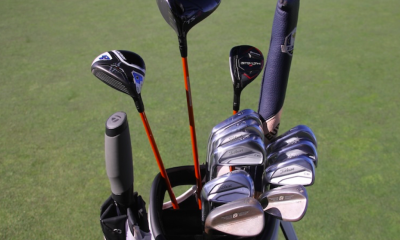
 Whats in the Bag3 weeks ago
Whats in the Bag3 weeks agoRobert MacIntyre’s winning WITB: 2024 RBC Canadian Open
-

 19th Hole6 days ago
19th Hole6 days agoRory McIlroy releases statement following crushing U.S. Open loss





